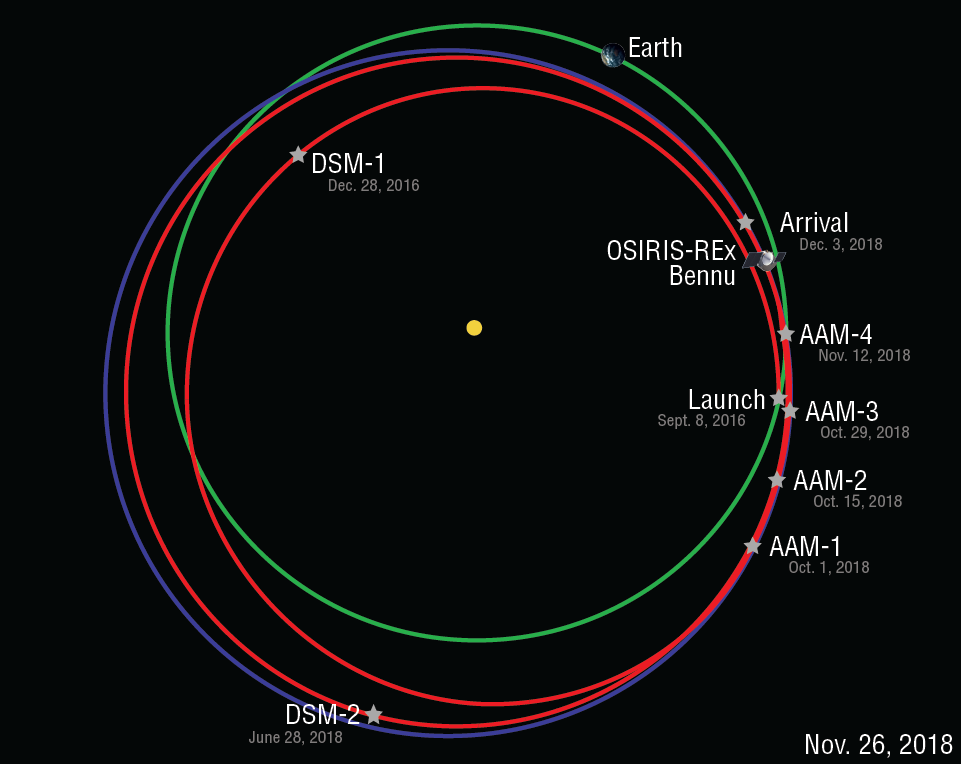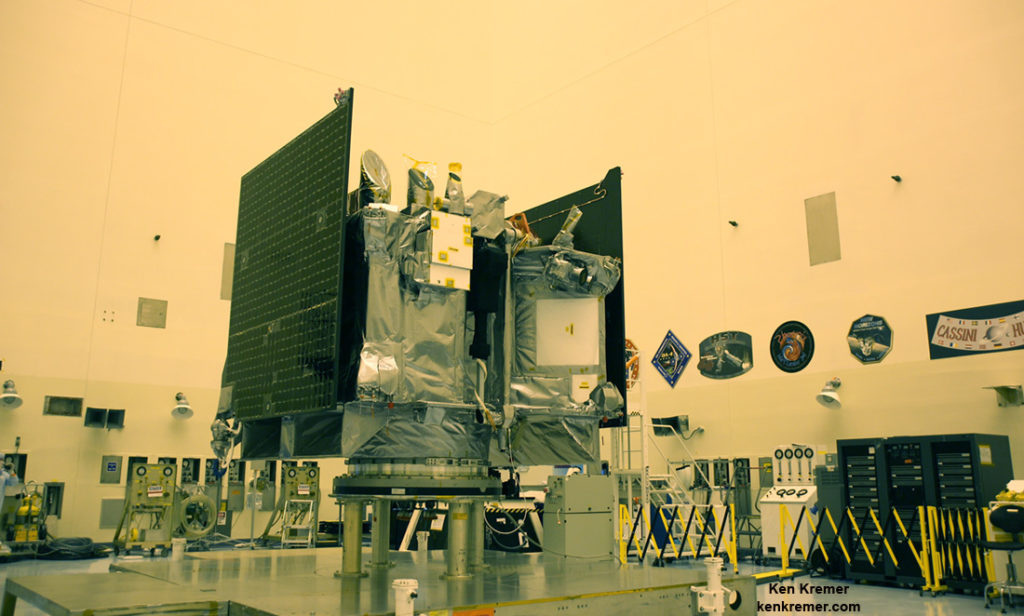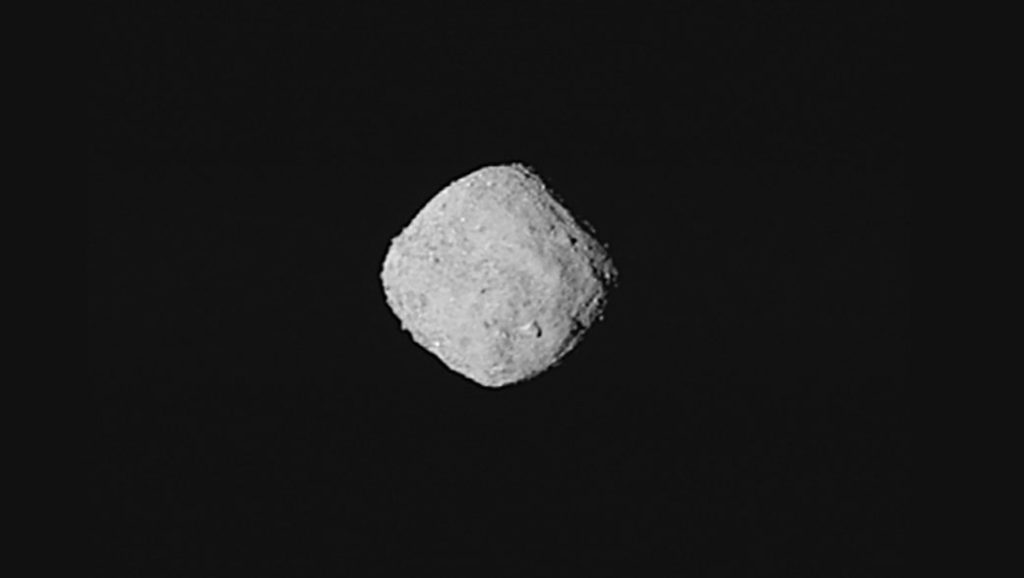RocketSTEM –2 December 2018
CAPE CANAVERAL, FL – NASA’s
OSIRIS-REx asteroid sampling spacecraft is scheduled to rendezvous with its
targeted asteroid, Bennu, on Monday, Dec. 3 at approximately noon EST.
OSIRIS-Rex
which stands for Origins, Spectral Interpretation, Resource Identification,
Security-Regolith Explorer (OSIRIS-REx) is NASA’s first mission to visit a
near-Earth asteroid, survey the surface, collect a sample and deliver it safely
back to Earth.
NASA
will air a live event from 11:45 a.m. to 12:15 p.m. EST to highlight the
arrival of the agency’s first asteroid sample return mission.
The
program will originate from OSIRIS-REx’s mission control at the Lockheed Martin
Space facility in Littleton, Colorado, and will air on NASA Television, Facebook Live, Ustream, YouTube and the
agency’s website. NASA TV also will
air an arrival preview program starting at 11:15 a.m. EST.
The spacecraft will spend almost a year
surveying the asteroid with five scientific instruments with the goal of
selecting a location that is safe and scientifically interesting to collect the
sample. OSIRIS-REx will return the sample to Earth in September 2023.
Participants in the arrival coverage event
include:
Michelle Thaller,
moderator, NASA’s Goddard Space Flight Center, Greenbelt, Md
Rich Burns, OSIRIS-REx
project manager, NASA’s Goddard Space Flight Center, Greenbelt, Md
Heather Enos, OSIRIS-REx
deputy principal investigator, University of Arizona, Tucson
Mark Fisher, OSIRIS-REx
spacecraft engineer, Lockheed Martin Space, Littleton, Colo.
Coralie Adam, OSIRIS-REx
flight navigator, KinetX, Inc. Space Navigation and Flight Dynamics, Simi Valley,
Calif.
Alliance Atlas V rocket from pad 41 on Cape Canaveral Air Force Station, FL, and
has been slowly approaching Bennu.
 |
|
OSIRIS-REx
orbit diagram as of Nov. 26, 2018 on final approach to target asteroid Bennu. Credit: NASA |
To date OSIRIS-REx has traveled over 2 Billion
kilometers and is currently about 124 million km from Earth.
The round trip time for radio signals to go back
and forth to the spacecraft from earth is about 13.8 minutes. The 1-way light
time is over 6.8 minutes.
 |
|
OSIRIS-Rex spacecraft in KSC cleanroom prior to
launch Sept 2016 from pad 41 on Cape Canaveral Air Force Station, FL. Credit: Ken Kremer/kenkremer.com/spaceupclose.com |
spend the first month performing flybys of Bennu’s north pole, equator and
south pole, at distances ranging between 11.8 and 4.4 miles (19 and 7 km) from
the asteroid. These maneuvers will allow for the first direct measurement of
Bennu’s mass as well as close-up observations of the surface. These
trajectories will also provide the mission’s navigation team with experience
navigating near the asteroid.
“Bennu’s low gravity provides a unique challenge
for the mission,” said Rich Burns, OSIRIS-REx project manager at NASA’s
Goddard Space Flight Center in Greenbelt, Maryland. “At roughly 0.3 miles
[500 meters] in diameter, Bennu will be the smallest object that any spacecraft
has ever orbited.”
The spacecraft will extensively survey the
asteroid before the mission team identifies two possible sample sites. Close
examination of these sites will allow the team to pick one for sample
collection, scheduled for early July 2020. After sample collection, the
spacecraft will head back toward Earth before ejecting the Sample Return
Capsule for landing in the Utah desert in Sept. 2023.
Watch for Ken’s
continuing onsite coverage of NASA, SpaceX, ULA, Boeing, Lockheed Martin,
Northrop Grumman and more space and mission reports direct from the Kennedy Space
Center, Cape Canaveral Air Force Station, Florida and Wallops Flight Facility,
Virginia.
Stay tuned here for Ken’s continuing Earth and Planetary science
and human spaceflight news: www.kenkremer.com –www.spaceupclose.com – twitter
@ken_kremer – email: ken at kenkremer.com
Dr. Kremer is a research
scientist, journalist and photographer based in the KSC area.
Ken’s photos are for sale and he is available for lectures and outreach events
Learn more about the upcoming upcoming/recent
SpaceX Falcon 9/CRS-16 launch to ISS, NASA missions, ULA Atlas & Delta
launches, SpySats and more at Ken’s upcoming outreach events at Quality Inn Kennedy Space
Center, Titusville,
FL, evenings:
3,4: “SpaceX Dragon CRS-16
resupply launch to ISS, SpaceX Falcon Heavy & Falcon 9 launches, upcoming SpaceX
Falcon 9 USAF GP3 3-01, NRO & USAF Spysats, SLS, Orion, Boeing and SpaceX Commercial
crew capsules, OSIRIS-Rex, Juno at Jupiter, InSight Mars lander, Curiosity and
Opportunity explore Mars, NH at Pluto, Kuiper Belt and more,” Kennedy Space
Center Quality Inn, Titusville, FL, evenings.
Photos for sale


